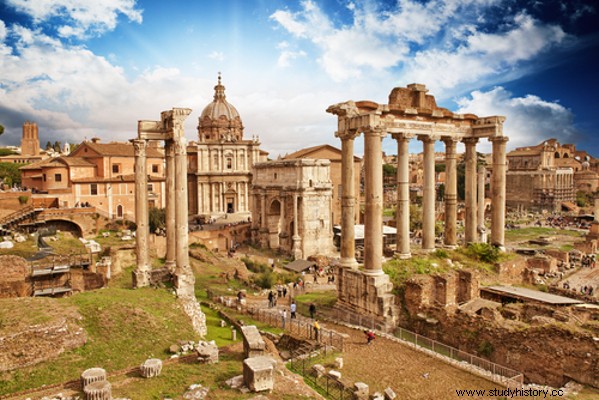
By Me. Cláudio Fernandes
When we talk about Fall of the Roman Empire , it must be understood that it is about the fall of the Western Roman Empire, that is, the portion of the vast Roman Empire that had the city of Rome as its seat, given that the eastern portion of the Empire, whose seat was Byzantium (later Constantinople), lasted until 1453.
The process of decline of the Western Roman Empire began in the middle of the 4th century AD, mainly due to the series of problems that had plagued it since the 3rd century, such as the barbarian invasions, the economic crisis and the military's struggle for power.
The migratory waves of barbarian peoples from northern Europe and regions of Asia towards Rome, caused by climatic changes and other similar factors, forced the Empire to repel the invaders and move progressively more army contingents to the defense of the center of the Empire, which was the city of Rome.
From an economic point of view, the Empire went into crisis especially after the collapse of the slave system, which had to be replaced by the colonate, system which consisted of the relationship between people with precarious subsistence conditions and large landowners, who hired their services and, in return, offered protection and land for work. Many owners who owned slaves started to free them and also establish a colony regime with them. This process ended up causing a decline in urban centers and commercial activity in cities.
Another phenomenon that gained great proportions in the midst of the Empire's crisis was the rise of Christianity. The Christians, who had already inhabited the Empire's domains for a long time, began to grow numerically. This fact led Emperor Constantine – who later transferred the seat of the Roman Empire to Byzantium – to establish Christianity as the main religion of the Roman Empire, having himself converted.
Take the opportunity to check out our video lessons related to the subject:
